No products in the cart.
Return To Shop
When you step into a church and see a priest dressed in special clothing, you might wonder, “What are Priests Clothes Called, and what do they mean?” Many people have questions about these garments, their history, and the meanings they hold.
These garments, often referred to as priest clothing names, have been a central part of church life for centuries. They’re not just attire; they represent profound connections to faith, tradition, and sacred duties. Each piece, from flowing robes to intricate stoles, is a key element of Priest Clothing, each with its unique story and purpose in worship.
Understanding why these clothes matter might seem tricky, but exploring their origins and significance helps us appreciate the vital role they play in religious life.
Want to know more about these traditional garments, their history, and how they have evolved from medieval priest clothes to modern styles? Let’s dive into the fascinating world of priest clothing and discover the deep meaning behind each piece.
What are Priests Clothes Called
The cloth that priests wear is called vestments, which are sacred garments used during religious services. These include the cassock, a long black robe symbolizing humility; the alb, a white garment representing purity; the stole, a narrow band worn around the neck signifying authority; and the chasuble, a colorful outer garment used during Mass. Each piece of vestment carries symbolic meaning, reflecting the priest’s role, spiritual responsibilities, and connection to God. Vestments vary by denomination and occasion, but their purpose remains the same: to highlight the sanctity of the priest’s duties and enhance the solemnity of religious ceremonies.
Understanding Priestly Clothing
Priestly clothing refers to the garments worn by clergy during religious services, especially in Christian liturgical settings. These garments serve both symbolic and functional purposes, signifying the priest’s sacred role, spiritual authority, and dedication to God. But what is the name of priest clothes, and why are they so important? Let’s explore the priest clothing and their meanings.
What Do You Call Priest Clothes?
The term priest clothing name refers to various garments worn by clergy during ceremonies and rituals. Though the names differ across denominations, their purpose remains largely consistent. Here are some of the most common priest clothing names and their historical significance:
- Cassock:
A long, ankle-length robe, typically black, is one of the most recognizable priest clothes. The cassock symbolizes humility, service, and devotion to God. Worn across denominations, it serves as a foundation for other vestments. - Alb:
A white robe worn over the cassock, the alb signifies purity and spiritual readiness. It’s an essential part of priest clothing for Mass, symbolizing the sanctity of the altar service. - Chasuble:
The colorful outer garment worn during the Eucharist, the chasuble signifies the celebrant’s role in the sacred rite. The color changes according to the liturgical season, making it a key component of priest clothes for Mass. - Stole:
A narrow strip of cloth worn around the neck, the stole represents authority and is often used during sacraments like baptism, marriage, and the Eucharist. - Zucchetto:
A small skullcap, especially worn by bishops, symbolizes spiritual leadership. - Cincture:
This rope-like belt, tied around the waist, represents chastity and preparedness for service. - Roman Collar:
Often called the clerical collar, this white band is a symbol of the priest’s clerical status. - Surplice:
A shorter white tunic worn during non-liturgical ceremonies, reflecting simplicity and devotion.
What are Priests Clothes Called in the Bible
The origins of priest clothing can be traced back to priest clothes in the Bible, particularly in the Old Testament. The high priest clothes in the Bible, as described in Exodus 28:2, highlight the divine selection of Aaron and the garments’ sacred purpose.
Key examples include:
- High Priest’s Garments: The high priest wore special attire, including a breastplate, tunic, sash, and mitre. These were designed to reflect holiness and spiritual authority.
- Priestly Vestments: Priest clothing in the Bible emphasized purity and sanctity, setting priests apart from the laity during worship.
Medieval Priest Clothes
Priest clothing in the medieval era was heavily influenced by the Church’s authority, religious symbolism, and the need to differentiate the clergy from the laity. Here is a closer look at medieval priest clothes:
- Chasubles: These were often highly decorative and embellished with intricate embroidery or gold thread, signifying the divine nature of the Mass.
- Albs: Medieval albs were made from luxurious fabrics like silk and were often trimmed with lace or gold, signifying the purity and holiness of the priest who wore them.
- Stoles: The stole worn during medieval times was often long and embroidered with religious symbols. It was considered a sign of authority and spiritual power.
- Mitres: A distinct feature of the medieval period, bishops often wore mitres (pointed, ceremonial headpieces) as part of their episcopal priest clothing.
While many of these garments have undergone changes over the centuries, the essence of their symbolism remains intact in modern priestly clothing.
Episcopal Priest Clothing
Episcopal priest clothing is worn by clergy in the Episcopal Church, an Anglican denomination. The Episcopal priest clothing includes similar garments to those in the Roman Catholic Church, such as the cassock, alb, chasuble, and stole. However, the design and use of certain garments may vary slightly based on tradition and regional practices.
- Cassocks are typically black in color, although other colors can be worn for special occasions.
- Albs are white and are worn during worship services, representing the purity of the priest.
- Chasubles in the Episcopal Church may vary in style but still follow the same basic principles as those in other liturgical traditions.
Priest Clothing for Mass
When priests are preparing for Mass, they wear specific priest clothing for Mass to symbolize their authority and the sanctity of the occasion. The main garments for priest clothes for Mass include:
- Cassock: The priest begins by wearing the cassock, which symbolizes humility and devotion.
- Alb: Over the cassock, the priest wears the alb to represent purity and spiritual cleanliness.
- Stole: The priest wears the stole over the alb to signify authority and the responsibility to perform sacramental duties.
- Chasuble: Finally, the chasuble is worn to symbolize the priest’s role as the celebrant of the Eucharist.
Each garment plays a crucial role in setting the tone for the sacredness of the Mass and ensuring that the priest is dressed appropriately for their duties.
Where Do Priests Get Their Clothes?
Priests purchase their attire from specialty stores that cater to clergy needs. From cassocks to chasubles, modern stores like Clergy Wear Shop provide high-quality garments that reflect the sacred traditions of priest clothing parts.
Conclusion
Priestly clothing is a powerful blend of symbolism, tradition, and function. Each piece, from the cassock to the chasuble, reflects the clergy’s sacred role in worship. Whether rooted in priest clothing in the Bible or influenced by medieval priest clothes, these garments continue to embody faith, service, and devotion.
For those seeking authentic clergy attire, Clergy Wear Shop offers a wide range of high-quality options, ensuring priests can find garments that honor their sacred duties and traditions.
FAQs
- What are priest clothes called?
Priest clothes are called vestments and include garments like the cassock, alb, stole, and chasuble. - What is the significance of priest clothing?
Priest clothing symbolizes faith, authority, and the sacred role of clergy in worship. - Where do priests buy their clothes?
Priests often purchase their attire from specialty stores or online retailers like Clergy Wear Shop. - Are there different types of priest clothing for different occasions?
Yes, priests wear different garments based on the occasion, such as cassocks for daily use and chasubles for Mass. - What is the name of priest clothes in the Bible?
In the Bible, priest clothing included tunics, breastplates, and mitres, symbolizing holiness and spiritual authority.



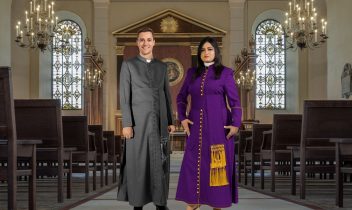
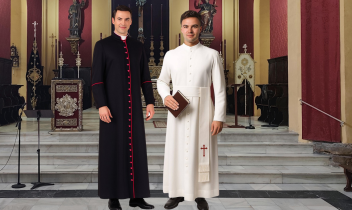
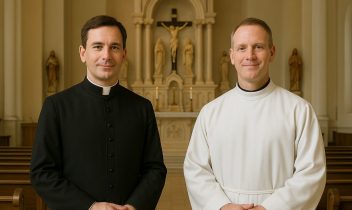
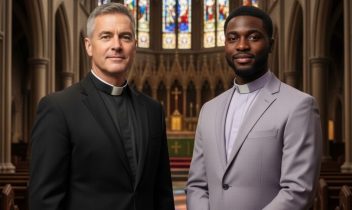
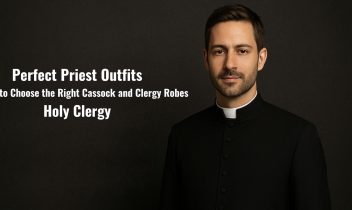
Recent Comments